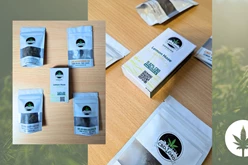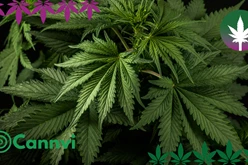Today, hemp in the form of marijuana is primarily known as an intoxicant. But the history of cannabis as a crop goes back thousands of years. Researchers at the University of Lausanne used genetic analyzes to find that it has been selectively bred for over 4,000 years. This makes it one of the oldest cultivated plants ever. This is about how it came to be banned.
Industrial hemp
Early written records indicate that marijuana was used as a drug and intoxicant from the beginning. The THC (tetra-hydro-cannabinol) present in female hemp plants causes a state of intoxication , which is important for ritual actions, such as funeral ceremonies in pre-Christian China. Furthermore, people have known many medical uses since ancient times. They use the active ingredients of the hemp plant to suppress nausea, combat eye problems and relieve pain.
Nevertheless, it has always been used as a useful plant . On the one hand , hemp seeds serve as food . They are considered a superfood. On the other hand, hemp fibers and leaves are used commercially to make sails and ropes for ships as well as robust clothing and to produce paper.
Decline in hemp use
Despite the wide range of possible applications , hemp products are being pushed out of the market as a result of industrialization . This is partly because there are no machines yet that can process the plant. It must be sown, grown and harvested by hand. Other raw materials prove to be more profitable in production. At the beginning of the 19th century, cotton, industrially processed using cotton machines, replaced hemp clothing in the textile industry, and the free wood from large forests replaced hemp fibers in the paper industry.
The first fully automatic hemp peeling machine was developed in the United States in 1938. But the anti-hemp lobby , which includes leading representatives of the cotton, timber and pharmaceutical industries, manages to artificially increase the price of hemp products through a tax and ultimately ban cannabis cultivation.
Ban on hemp as a drug
It's not just lobbyists who are causing restrictions on cannabis consumption. After alcohol prohibition fails in America in the early 1930s, thousands of workers who were responsible for policing the prohibition lost their jobs. One of them is the head of the drug boarding school, Harry J. Anslinger. He is driven by his belief in a better society without drugs.
He supports the production of anti-cannabis films such as Reefer Madness , which show the alleged effects of consuming THC . His claims: Cannabis alters personality, causes uncontrollable sexual desire and leads to violence. This propaganda finds fertile ground in the USA. Possession and consumption of hemp will be prohibited . In 1947, Anslinger was appointed to the UN Drug Commission, where he implemented a convention against cannabis in 1961. According to it, all member states must implement the ban in their own laws.
Hemp use today
Cannabis is increasingly being used medically in Europe and is now legalized as an intoxicant in most US member states. Nevertheless , in Germany only certified farmers are allowed to cultivate cannabis as a crop. However , growing hemp in your own garden is prohibited. Perhaps that will change with the decriminalization of cannabis , which is enshrined in the latest coalition agreement between the SPD, the Greens and the FDP. With it, Germany is also opening a new chapter in the millennia-old, eventful history of hemp.



.png?h=64&w=200&mode=max&scale=canvas&format=webp&autorotate=true)












.png)